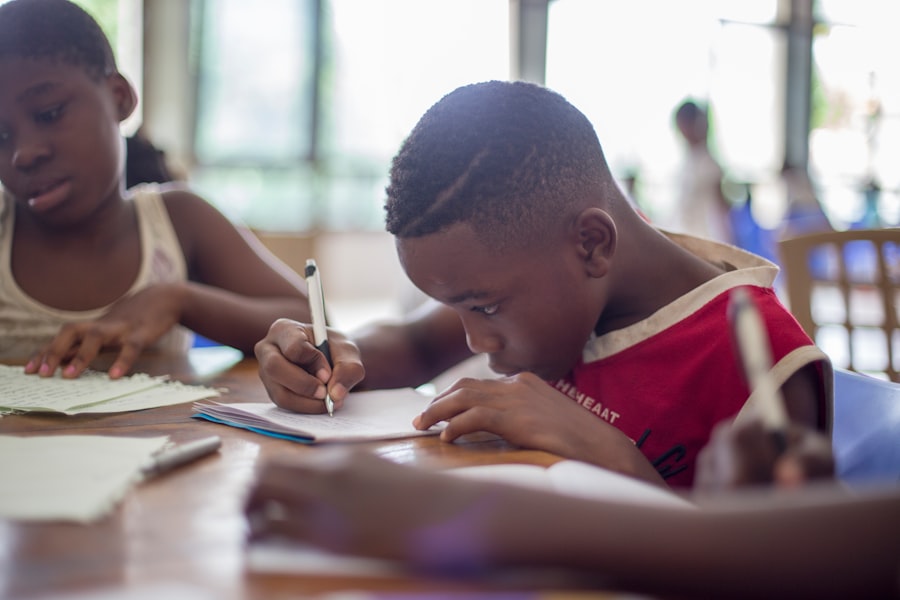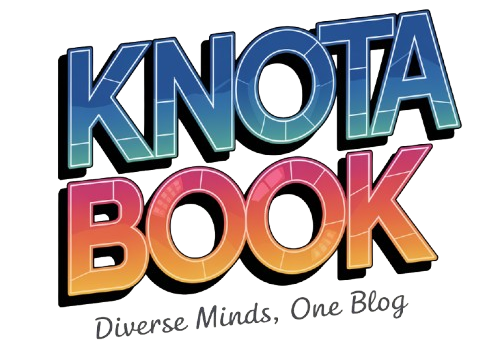Education serves as the cornerstone for personal and societal development, acting as a catalyst for unlocking the full potential of students. It is not merely a process of acquiring knowledge; rather, it is a transformative journey that shapes individuals into critical thinkers, responsible citizens, and lifelong learners.
By providing a structured environment for learning, education empowers students to explore their interests, develop their talents, and cultivate a sense of purpose. Moreover, education plays a pivotal role in bridging socioeconomic gaps and promoting equity. It offers opportunities for individuals from diverse backgrounds to access resources and experiences that can elevate their circumstances.
For instance, students who may not have access to enriching extracurricular activities at home can benefit from school programs that encourage exploration in the arts, sciences, and sports. This exposure not only enhances their academic performance but also nurtures their social skills and emotional intelligence. In essence, education is a powerful tool that can transform lives, enabling students to realize their aspirations and contribute meaningfully to society.
Key Takeaways
- Education plays a crucial role in unlocking and maximizing student potential
- Fostering a growth mindset in students can lead to greater success and achievement
- Teachers play a key role in unlocking student potential through support and guidance
- Technology can be utilized to enhance learning and improve student achievement
- Creating a supportive and inclusive learning environment is essential for student success
Strategies for Fostering a Growth Mindset in Students
Emphasizing Effort Over Innate Talent
To cultivate this mindset, educators can implement various strategies that promote perseverance and a positive attitude toward challenges. One effective approach is to emphasize the value of effort over innate talent. By praising students for their hard work and persistence rather than solely their achievements, teachers can help them understand that success is often the result of dedication and practice.
Normalizing Mistakes as Opportunities for Growth
Another strategy involves creating an environment where mistakes are viewed as opportunities for growth rather than failures. Educators can encourage students to take risks in their learning by normalizing the idea that errors are a natural part of the educational process. For example, teachers might share their own experiences of overcoming challenges or learning from mistakes, thereby modeling a growth mindset.
Reflective Practices for Internalizing Resilience
Additionally, incorporating reflective practices into the classroom—such as journaling or group discussions about learning experiences—can help students internalize the importance of resilience and adaptability in their educational journeys.
The Role of Teachers in Unlocking Student Potential

Teachers are instrumental in unlocking student potential, serving not only as educators but also as mentors and role models. Their influence extends beyond the classroom; they have the power to inspire students to pursue their passions and develop a sense of self-efficacy. Effective teachers recognize the unique strengths and weaknesses of each student, tailoring their instructional approaches to meet diverse learning needs.
By fostering strong relationships with students, teachers create a safe space where learners feel valued and motivated to engage actively in their education. Moreover, teachers play a critical role in instilling a sense of curiosity and a love for learning. They can ignite students’ interests by connecting lessons to real-world applications or current events, making learning relevant and engaging.
For instance, a science teacher might incorporate hands-on experiments that allow students to explore concepts in a tangible way, while a history teacher could use storytelling techniques to bring historical figures to life. By making learning dynamic and interactive, teachers can help students see the relevance of their education and inspire them to reach their full potential.
Utilizing Technology to Enhance Learning and Student Achievement
| Technology Integration | Student Achievement |
|---|---|
| 1:1 device program | Improved test scores |
| Online learning platforms | Increased student engagement |
| Interactive whiteboards | Enhanced critical thinking skills |
| Digital resources | Personalized learning experiences |
In today’s digital age, technology has become an integral part of the educational landscape, offering innovative tools that enhance learning experiences and student achievement. The use of technology in the classroom can facilitate personalized learning, allowing educators to tailor instruction to meet individual student needs. For example, adaptive learning platforms can assess students’ progress in real-time and adjust content accordingly, ensuring that each learner receives appropriate challenges and support.
Furthermore, technology fosters collaboration and communication among students. Online discussion forums, collaborative projects using cloud-based tools, and virtual classrooms enable learners to connect with peers across geographical boundaries. This not only enriches their educational experience but also prepares them for a globalized workforce where teamwork and digital literacy are essential skills.
Additionally, technology provides access to a wealth of resources beyond traditional textbooks—students can explore interactive simulations, educational videos, and online courses that expand their knowledge base and stimulate curiosity.
Creating a Supportive and Inclusive Learning Environment
A supportive and inclusive learning environment is vital for maximizing student potential. Such an environment acknowledges and celebrates diversity while ensuring that all students feel safe, respected, and valued. Educators can foster inclusivity by implementing culturally responsive teaching practices that recognize the unique backgrounds and experiences of each student.
This approach not only enhances engagement but also promotes empathy and understanding among peers. Creating a supportive atmosphere also involves establishing clear expectations for behavior and communication within the classroom. Teachers can encourage positive interactions by modeling respectful dialogue and conflict resolution strategies.
Additionally, incorporating social-emotional learning (SEL) into the curriculum helps students develop essential skills such as self-awareness, empathy, and relationship-building. By prioritizing emotional well-being alongside academic achievement, educators can create an environment where all students thrive.
Encouraging Critical Thinking and Problem-Solving Skills

Critical thinking and problem-solving skills are essential competencies that empower students to navigate complex challenges both inside and outside the classroom. Educators can encourage these skills by designing lessons that promote inquiry-based learning—an approach that encourages students to ask questions, investigate topics deeply, and draw conclusions based on evidence. For instance, project-based learning allows students to tackle real-world problems collaboratively, fostering creativity and analytical thinking.
Moreover, integrating open-ended questions into classroom discussions stimulates critical thinking by challenging students to articulate their reasoning and consider multiple perspectives. Teachers can facilitate debates or Socratic seminars where learners engage in thoughtful dialogue about various issues, encouraging them to think critically about their beliefs and assumptions. By nurturing these skills, educators prepare students not only for academic success but also for informed citizenship in an increasingly complex world.
The Impact of Parental Involvement in Student Success
Parental involvement is a crucial factor in student success, influencing academic performance, motivation, and overall well-being. When parents actively engage in their children’s education—whether through attending school events, communicating with teachers, or supporting homework routines—students are more likely to achieve higher grades and develop positive attitudes toward learning. Research consistently shows that children whose parents are involved in their education tend to have better attendance records, improved behavior, and increased self-esteem.
To foster parental involvement, schools can create partnerships with families by providing resources and opportunities for engagement. Workshops on effective parenting strategies or informational sessions about curriculum expectations can empower parents to support their children’s learning at home. Additionally, schools can utilize technology to facilitate communication between educators and families through platforms that allow for updates on student progress or upcoming events.
By building strong connections between home and school, educators can create a supportive network that enhances student success.
Promoting a Well-Rounded Education for Holistic Student Development
A well-rounded education is essential for holistic student development, encompassing not only academic achievement but also social, emotional, physical, and creative growth. Schools should strive to provide diverse opportunities that cater to various interests and talents beyond traditional subjects. This includes offering programs in the arts, physical education, vocational training, and extracurricular activities that allow students to explore their passions and develop new skills.
Moreover, promoting social-emotional learning (SEL) within the curriculum is vital for fostering resilience and interpersonal skills among students.
By prioritizing holistic development through a well-rounded education model, schools prepare students not only for academic success but also for fulfilling lives as engaged citizens who contribute positively to society.
FAQs
What is the importance of education?
Education is important as it provides individuals with the knowledge and skills necessary to succeed in their personal and professional lives. It also plays a crucial role in promoting social and economic development.
What are the different levels of education?
Education is typically divided into different levels, including early childhood education, primary education, secondary education, and higher education (such as college or university).
What are the benefits of early childhood education?
Early childhood education has been shown to have long-term benefits, including improved cognitive development, better social skills, and higher academic achievement later in life.
How does education impact society?
Education has a significant impact on society by promoting social and economic development, reducing poverty, and fostering a more informed and engaged citizenry.
What are some current challenges in the education system?
Some current challenges in the education system include access to quality education, educational inequality, funding issues, and adapting to new technologies and teaching methods.
How can education be improved?
Education can be improved through various means, including investing in teacher training and support, increasing access to educational resources, and promoting innovative teaching methods.

